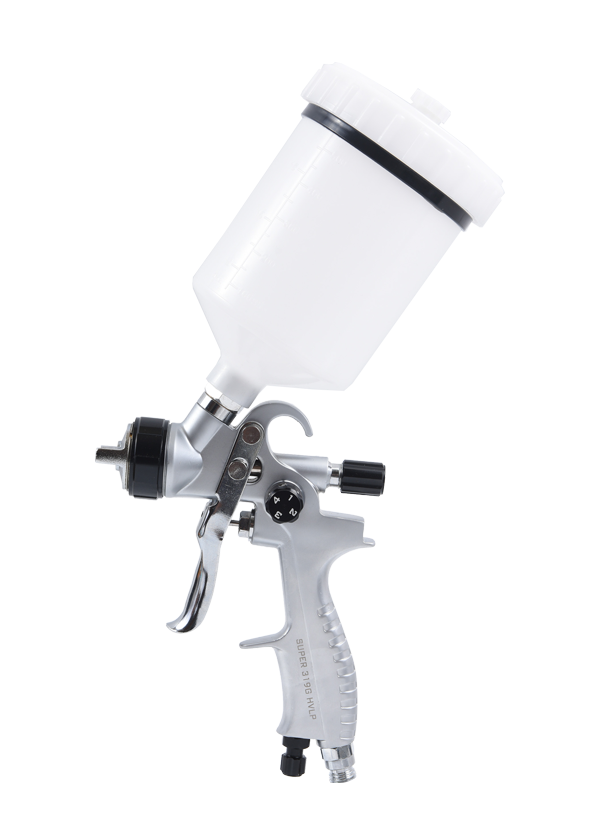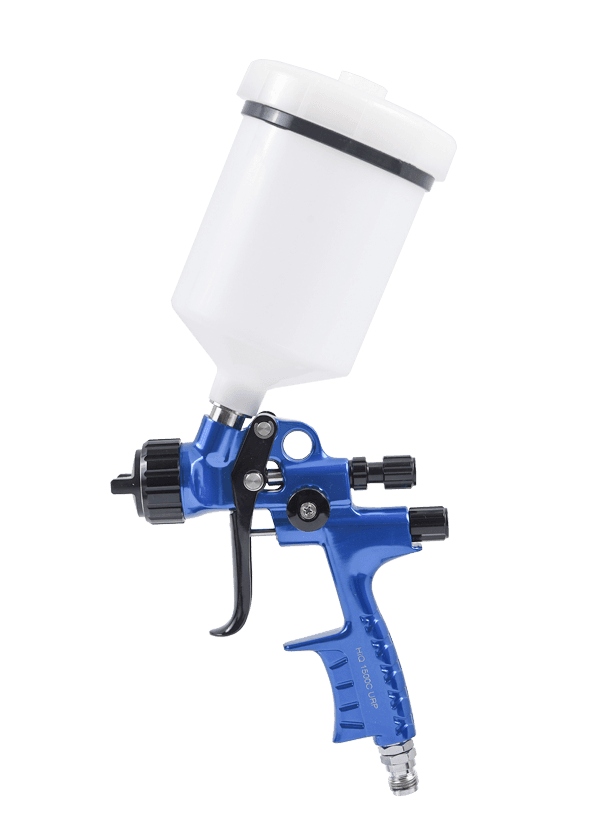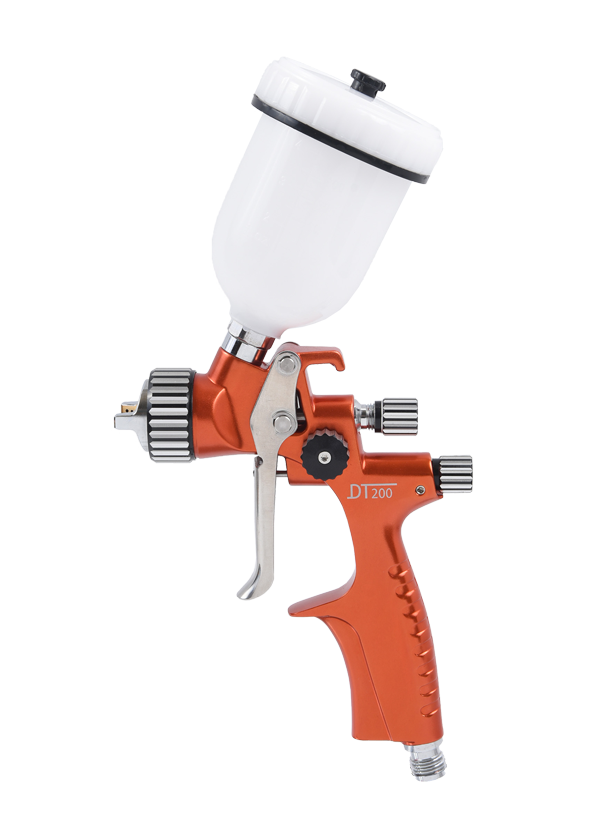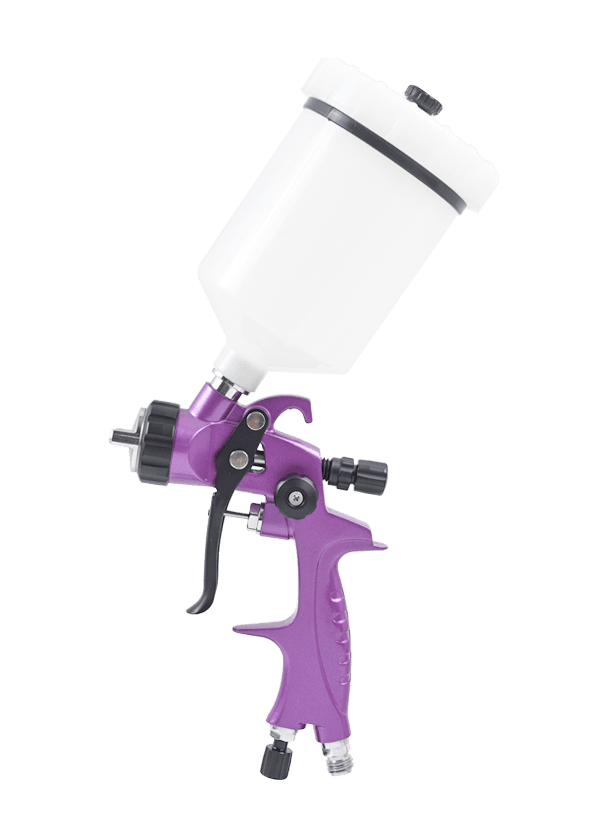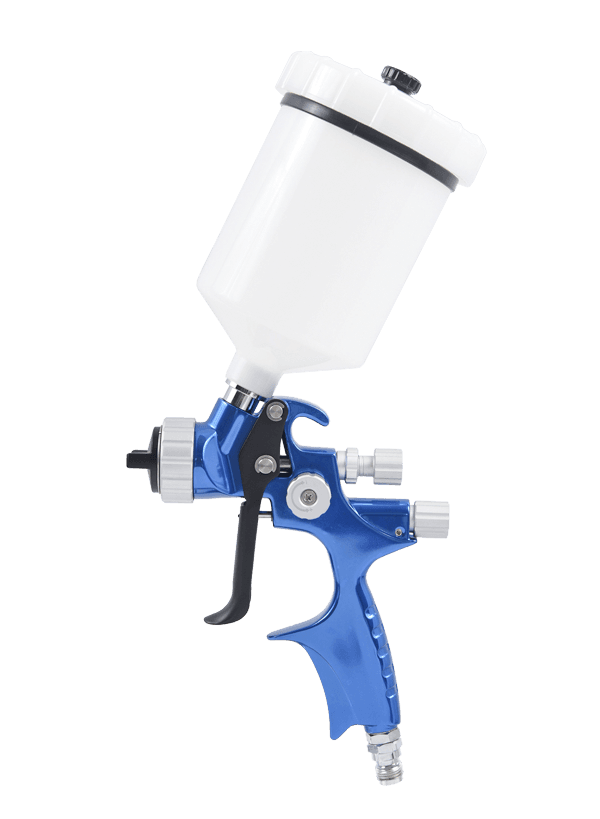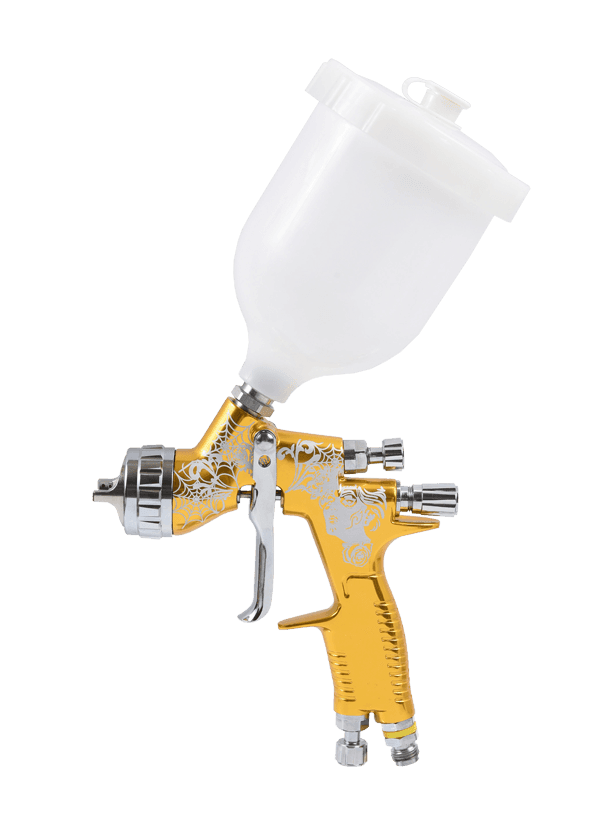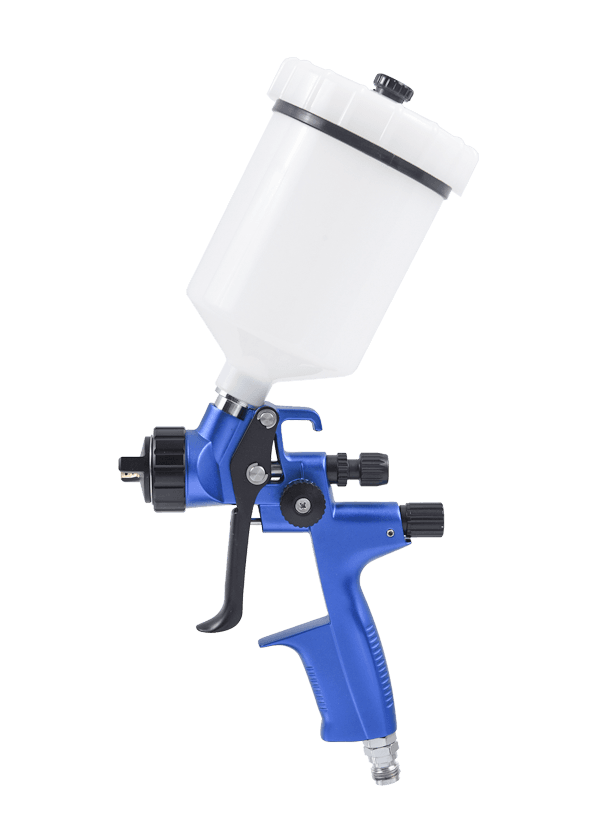Controlling spray patterns and coverage with a mini spray gun involves several techniques and adjustments to achieve the desired results. Here are some common techniques:
Adjusting Air Pressure: Increasing or decreasing the air pressure controls the force at which the paint is atomized. Higher pressure typically produces finer atomization and a softer spray pattern, while lower pressure results in a coarser spray. This adjustment is typically made using the regulator on the compressor.
Adjusting Fluid Flow: Mini spray guns often have controls to adjust the flow rate of the paint or other coating material. Increasing the fluid flow rate typically results in a thicker coat with broader coverage, while decreasing it produces a thinner coat with more precise application.
Changing Nozzle Size: Mini spray guns come with interchangeable nozzles of different sizes. Larger nozzles produce wider spray patterns with more coverage, while smaller nozzles produce finer, more controlled spray patterns. Choosing the right nozzle size depends on the desired coverage and detail of the application.
Selecting the Right Spray Pattern: Many
mini spray guns allow you to adjust the spray pattern shape, such as round, horizontal, or vertical. This adjustment is typically done by rotating the nozzle cap or adjusting the air cap. Choosing the appropriate spray pattern for the surface being sprayed helps optimize coverage and reduce overspray.
Maintaining Proper Distance: Keeping the spray gun at the correct distance from the surface being sprayed is crucial for controlling coverage. Holding the gun too close can result in uneven coverage and runs, while holding it too far away can cause overspray and wasted material. Generally, maintaining a distance of 6 to 8 inches from the surface is recommended.
Overlapping Strokes: When spraying larger surfaces, overlapping each pass by about 50% ensures even coverage and avoids streaks or missed spots. This technique helps maintain a consistent coat thickness across the entire surface.
Practice and Experimentation: Achieving mastery with a mini spray gun often requires practice and experimentation. Different materials, surface types, and environmental conditions may require adjustments to the spray gun settings and techniques to achieve optimal results.
By mastering these techniques and making appropriate adjustments, you can effectively control spray patterns and coverage with a mini spray gun for various painting and coating applications.

 English
English Español
Español
